Continents and Oceans Teaching Resources
Browse printable worksheets, activities and more ways to bring the continents and oceans into your primary classroom this school year as you take your students on an adventure around the world!
Dive into the five named oceans and traverse the seven continents with Australian curriculum-aligned teaching resources created by teachers for teachers. With editable and differentiated options available, these geography resources are designed to cut down on your lesson planning time and help you spark more 'aha' moments in your classroom.
New to teaching this portion of the HAAS curriculum, or looking for fresh ideas to engage your students? Read on for a primer from our teacher team!
What Are Continents? A Definition for Kids
Let's get started with a kid-friendly definition of continents, shall we?
Continents are very big pieces of land on our planet Earth that are separated by big oceans or seas.
There are typically considered to be seven continents (in alphabetical order):
- Africa
- Antarctica
- Asia
- Australia
- Europe
- North America
- South America
Each continent has its own unique features like mountains, rivers, forests, and deserts, and many different kinds of animals and plants live there. People from all over the world live on these continents and have their own languages, cultures, and traditions.
Continents are also home to many different countries, each with its own history, language, and traditions.
How Many Continents Are There?
The concept of continents has evolved over time, and there are different ways to define them. Some geographers consider Europe and Asia to be a single continent called Eurasia, while others consider North and South America to be a single continent called America. However, the seven-continent model is the most widely recognised and used, including here in Australia.
What Are the 7 Continents From Largest to Smallest?
There are pretty big differences between the seven continents, something students will be able to see on a map. But just how big? Let's take a look at all seven from largest to smallest!
- Asia is the largest continent with an area of approximately 44.58 million square kilometres. It is home to more than 4.5 billion people, making it the most populous continent on Earth.
- Africa is the second-largest continent, and it covers an area of approximately 30.37 million square kilometres. It is home to over 1.3 billion people and is the world's second-most populous continent.
- North America ranks third in continent size, covering an area of approximately 24.49 million square kilometres. It is home to over 579 million people.
- South America is the fourth-largest continent, covering an area of approximately 17.84 million square kilometres. Even at fourth, this continent is home to more than 423 million people.
- Antarctica is the fifth-largest continent, covering an area of approximately 14 million square kilometres. It's the coldest and driest continent on Earth, and it also has the smallest population.
- Europe is the sixth-largest continent, covering an area of approximately 10.18 million square kilometres. It's the home of more than 746 million people.
- Australia is the smallest continent, covering an area of approximately 8.6 million square kilometres. Our home country is also the world's smallest inhabited continent, with a population of just over 24 million people.
What Are Oceans? A Definition for Kids
Of course, we know you know this one, teachers! But here's a kid-friendly definition of oceans for your students:
Oceans are gigantic bodies of water that cover most of the Earth's surface.
There are five oceans scattered around the world:
- Atlantic Ocean
- Indian Ocean
- Southern Ocean
- Arctic Ocean
- Pacific Ocean
These oceans are extremely deep and have a lot of different types of animals living in them, including fish, whales, and dolphins. Oceans also have waves.
How Many Oceans Are There?
Yes, we already mentioned there are five, but you may have learned just four when you were in Year 2 or 3. That's because the Southern Ocean was only recognised by the International Hydrographic Organization in 2000. Known as the fifth ocean, it is located around the continent of Antarctica.
What Are the 5 Oceans From Largest to Smallest?
Pardon the pun, but let's go deeper. The oceans vary pretty significantly in size. Here's a look at their order from largest to smallest:
- Pacific Ocean — 165 250 000 sq km
- Atlantic Ocean — 106 460 000 sq km
- Indian Ocean — 73 556 000 sq km
- Southern Ocean — 20 327 000 sq km
- Arctic Ocean — 14 056 000 sq km
Why Do We Teach About Oceans and Continents?
Like any lesson we teach, we know there's a reason, but sometimes you have a student who really wants you to spell out the 'why.' Need a ready answer? Don't worry! We have you covered!
Learning about the oceans and the continents helps us to understand:
- Earth's Geography — When you put these bodies of land and bodies of water together, you have a framework to understand how land and water are distributed on our planet.
- Biodiversity — The oceans and continents are home to a wide variety of plants and animals. When we start to break down each, students are able to see just how diverse the flora and fauna are from place to place across the globe!
- The Human Impact — Our actions can have a significant impact on the oceans and continents, and teaching about them helps our students understand the importance of environmental conservation and how the actions we take as individual humans can affect ecosystems and the natural world.
- History and Culture — The oceans and continents have played a significant role in the development of human history and culture. Through this lens, we offer our students a deeper understanding of how civilisations have developed and interacted with their environments.
- Plus Plan
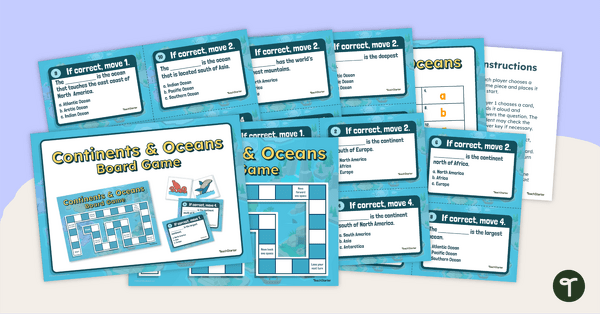
Continents and Oceans Board Game
Explore the continents and oceans of the world with this hands-on Geography board game.
- Free Plan
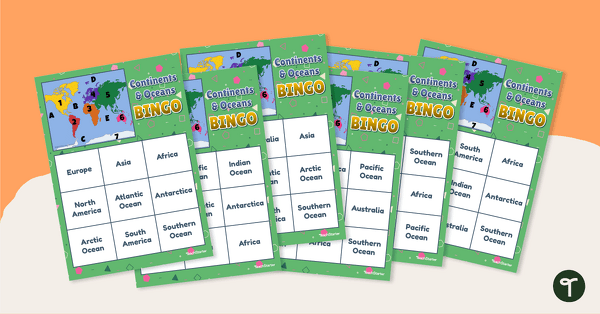
Continents and Oceans Bingo
Turn Geography into a fun and educational learning experience by using our Continents and Oceans Bingo Game!
- Plus Plan
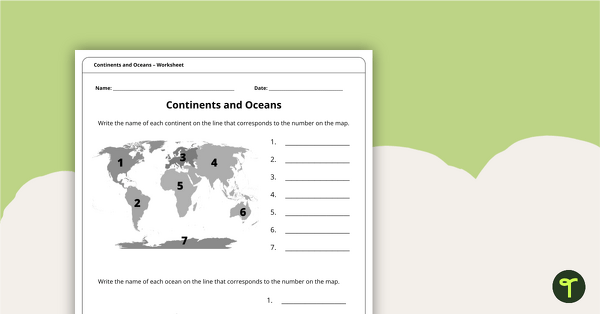
Continents and Oceans Worksheet
A worksheet to practise identifying the 7 continents and 5 oceans.
- Plus Plan
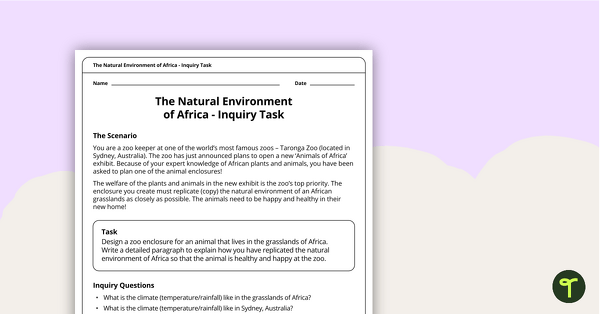
The Natural Environment of Africa - Inquiry Task
An inquiry task focusing on the natural environment of the grasslands of Africa.
- Plus Plan

The Natural Environment of South America — Inquiry Task
An inquiry task focusing on the natural environment of the Amazon rainforest in South America.
- Plus Plan
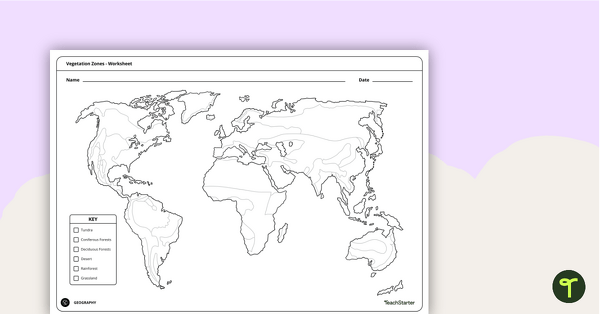
World Vegetation Zones - Mapping Template
Locate and explore different vegetation zones around the world with this mapping worksheet.
- Plus Plan
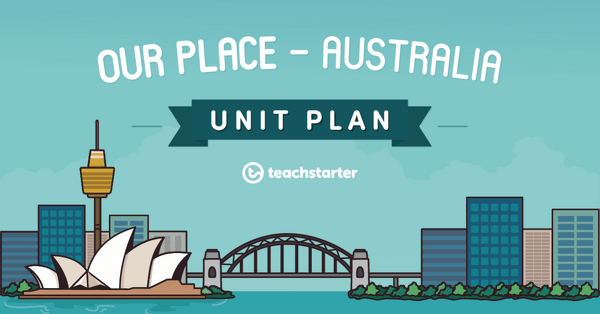
Our Place - Australia Unit Plan
This Humanities and Social Sciences unit addresses a range of concepts relating to the natural and human features of Australia.
- Plus Plan

Rainforests of Australia
A 60 minute lesson in which students will identify, describe and locate rainforests in Australia.
- Plus Plan
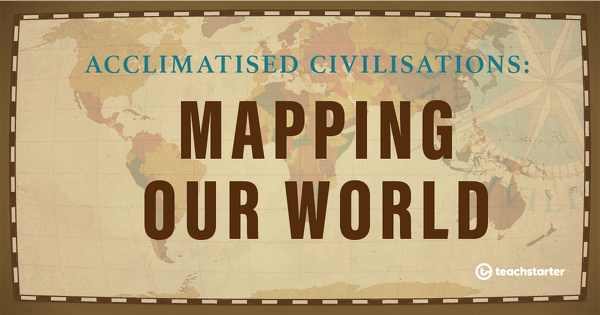
Mapping Our World
A 60-minute lesson in which students revise locating and labelling the main features on the world map.
- Plus Plan
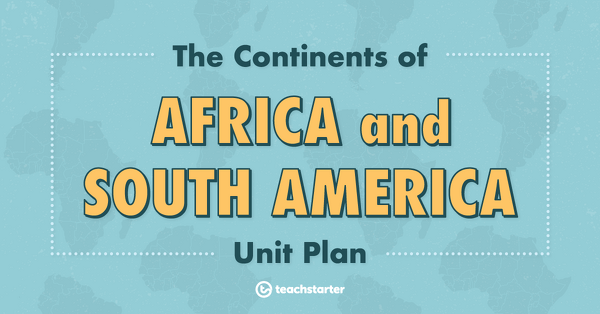
The Continents of Africa and South America Unit Plan
This Geography unit addresses the topographical features and the natural environment of the continents of Africa and South America.
- Plus Plan
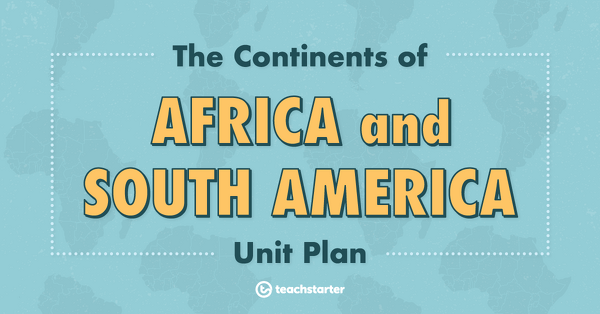
Reflection of Learning
A 60 minute lesson in which students will reflect on what they have learned about the continents of Africa and South America.
- Plus Plan

The Natural Environment of South America - Inquiry Task
A 60 minute lesson in which students will demonstrate their understanding of the natural environment of South America through an open-ended inquiry.
- Plus Plan
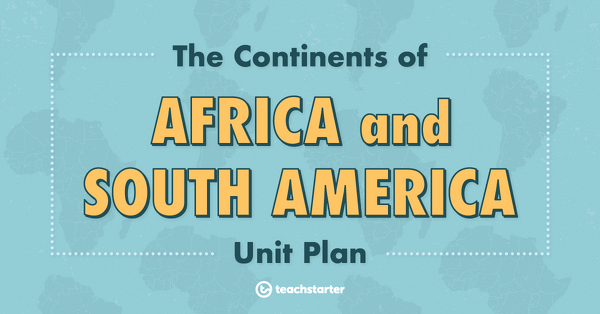
The Natural Environment of South America
A 60 minute lesson in which students will explore the natural environment of the continent of South America.
- Plus Plan
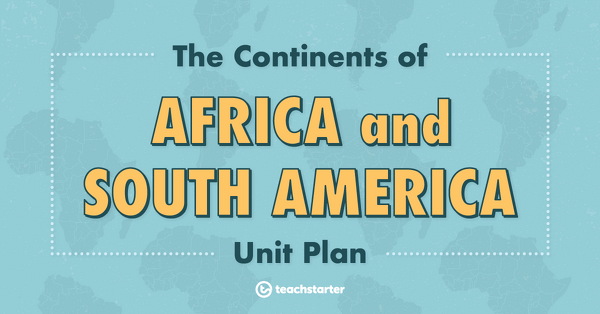
The Topography of South America
A 60 minute lesson in which students will explore the topographical features of the continent of South America.
- Plus Plan
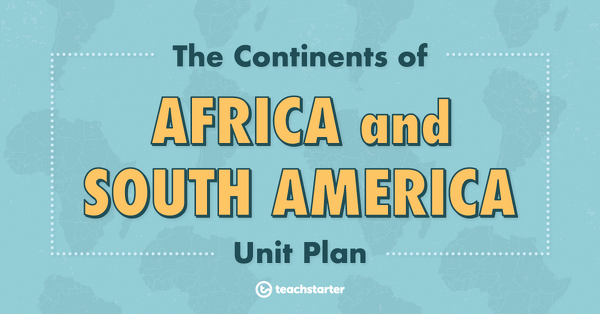
Welcome to South America!
A 60 minute lesson in which students will identify some of the countries and major cities on the continent of South America.
- Plus Plan
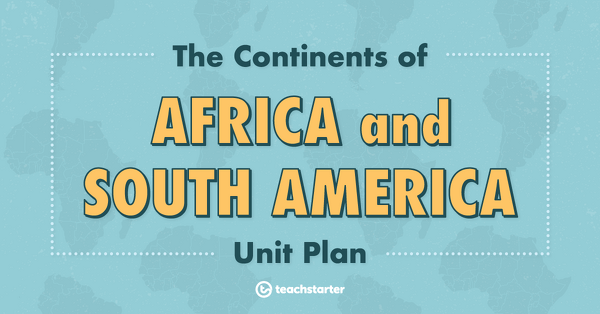
The Natural Environment of Africa - Inquiry Task
A 60-minute lesson in which students will demonstrate their understanding of the natural environment of Africa through an open-ended inquiry.
- Plus Plan
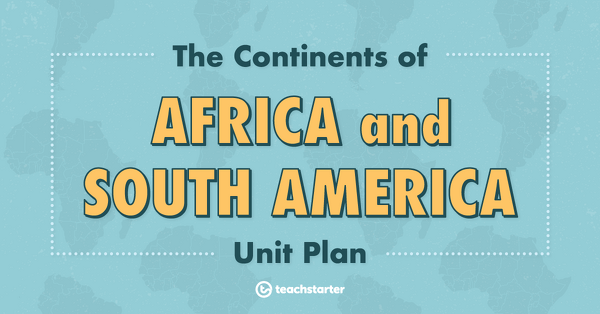
The Natural Environment of Africa
A 60 minute lesson in which students will explore the natural environment of the continent of Africa.
- Plus Plan
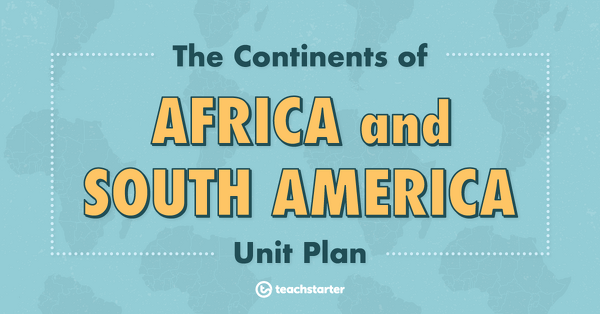
The Topography of Africa
A 60 minute lesson in which students will explore the topographical features of the continent of Africa.
- Plus Plan
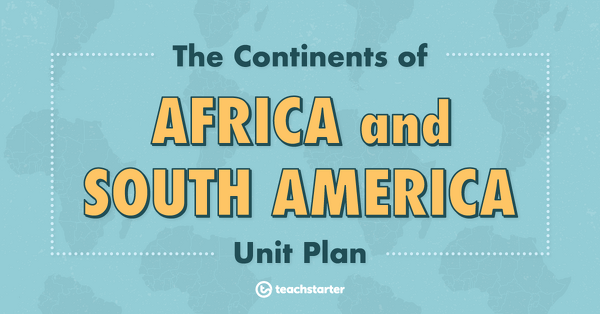
Welcome to Africa!
A 60 minute lesson in which students will identify some of the countries and major cities on the continent of Africa.
- Plus Plan
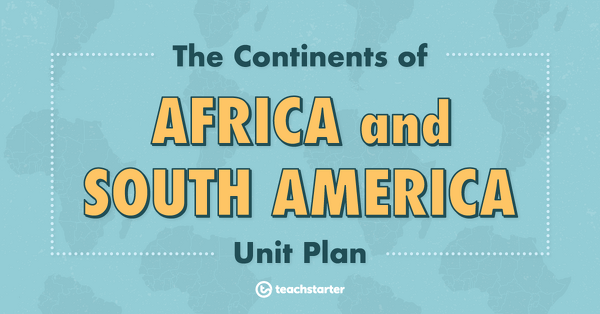
Where in the World?
A 60 minute lesson in which students will revise world geography.
- Plus Plan
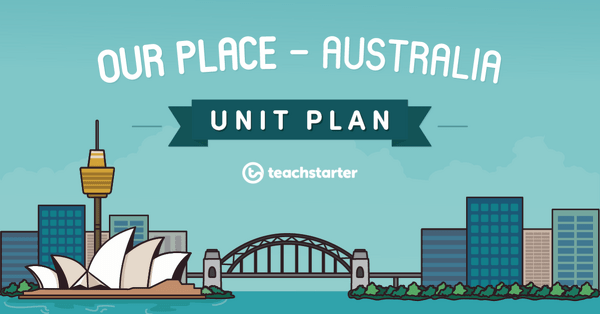
Our Place - Australia Inquiry Task
An inquiry-based assessment task in which students will demonstrate an understanding of the natural and human features of Australia.
- Plus Plan
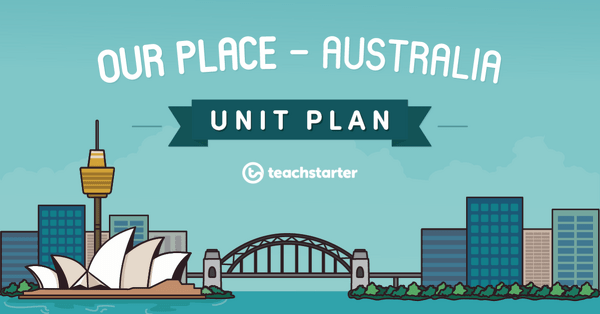
Australian Capital Cities and Regional Centres
A 60 minute lesson in which students will investigate the geographical location of capital cities and regional centres around Australia.
- Plus Plan
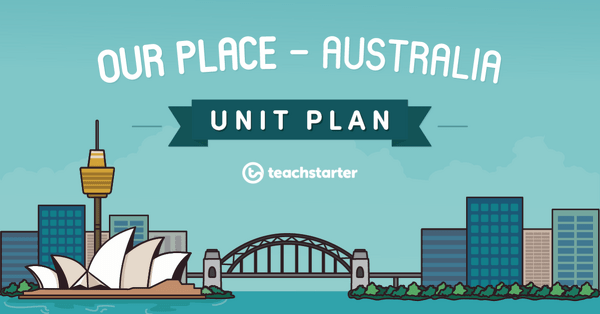
Great Southern Land
A 60 minute lesson in which students will explore the natural and human features of Australia.
- Plus Plan
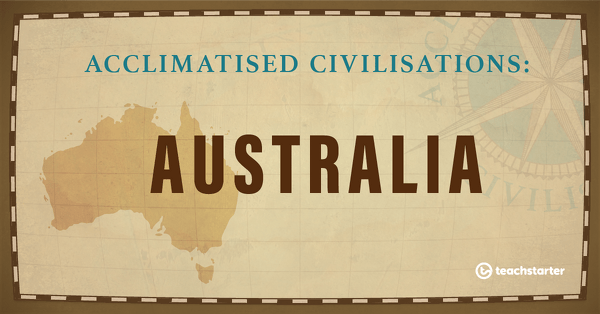
Australia
A 60-minute lesson in which students learn how people lived in and adapted to the environment in Australia.